By Smita Mukerji

It is high time that the persistent, officious exertions of activists of dubious backgrounds and intentions, to targettedly disrupt long-established traditions of Hindu temples, on the pretext of contrived themes of discriminations and oppressions suffered by unnamed entities who they purport to represent, be brought under the provisions governing spreading of religious hatred. There can be no other way to regard these incessant attacks selectively directed against the institutions and edifices of Hindu religion, in complete disregard of the right of its adherents to hold beliefs and their freedom to practice their faith unmolested by maleficent actors outside its fold and ideological mold, and with no stakes in it.
One of the most glaring examples of this unrelenting aggression on a religious community is the case of Sabarimala Temple, specifically activism in respect of a restriction which has been in place since centuries, according to which females above the age of 9 years and those below 55 years are not permitted to enter the shrine. The devout accept this restriction unquestioningly because it pertains to longstanding traditions of which they are the bearers. But the most important point to stress here is not the merit and grounding of their belief, but whether it obstructs the fulfilment of devotions by the practitioners (viz., the female devotees). The activism premised on the ‘right to pray’ have sought through repeated PILs to portray the restriction as an injustice and a debilitating circumstance preventing women devotees from practicing their faith. But this is patently not the case since this tradition involving their voluntary abstention essentially constitutes their faith.
In the recent instance, the Indian courts, which clearly cannot resist an opportunity to overreach their relevance as well as competence to meddle in Hindu customs, again chose to ride roughshod over the freedoms of the concerned Hindu community under the pretence of ‘delivering justice’, ruling in favour of petitioners seeking entry of all women to the temple, which in no way represent the wishes of the women devotees, in fact amounts to foisting upon them ideas incompatible with their deepest held beliefs.
The other important aspect to consider is: does the practice harm any individual or group? Does it violate any fundamental human principle? The answer to both of these is emphatically in negative which we will elaborate here. But before we do, the designs of the petitioners must be put to question as to why they would invest their unremitting energies in altering the norm in a Hindu temple which, other than being a unique custom that follows from local belief, has no traction beyond its realm on Hindu society in general?
This nature of intrusive activism is all the more sinister since it does not concern itself with any of the blatant inequities existent in other religious denominations, nor the most hate-filled doctrines and exhortations to violence contained in them against other groups of people, those that accord a demeaning status and prescribe the most indignifying treatment of women, to turn into causes for ‘gender equality’, ‘justice’ or ‘humanity’. The reason for this is that these sundry activists are not acting on the intention to safeguard the rights of devotees whose cause they seemingly espouse, but in fact to destroy the foundation of their beliefs striking at the roots of their faith.
The unrest generated around the restriction on admittance of women in a certain age group into the Sabarimala Ayyappa temple has claimed a lot of space in media, tom-tommed as the feminist crusade against unmistakable ‘patriarchy’ countenanced in the name of tradition, sure sign of regress that presumably ails Hindu society. But is it really as it has been made to appear? Why are the views of the female devotees, which are expressed in the widespread campaign that goes by the tagline ‘Ready To Wait’, to prevent such arbitrary interference in the traditions of the temple, not taken into consideration? And if it is not their wish to visit the temple in keeping with its tradition, whose “rights” do the petitioners presume to stand for?
To put the matter in perspective, there are five main Ayyappa temples equal in stature (Achankovil Sastha Temple, Aryankavu Sree Darma Sastha Temple, Kulathupuzha Sastha Temple, Ponnambalamedu Hill or Ponnambalamedu Temple and Sabarimala Ayyappa Temple, which mark the various stages of the life of Lord Ayyappa, also known as Hariharaputra – meaning the ‘son of Harihara’, a deity in whom ‘Hari’ and ‘Hara’ are said to fuse (names given to Vishnu and Shiva respectively). Of these only in two, Sabarimala and Aryankavu, females of mentioned age are not allowed.
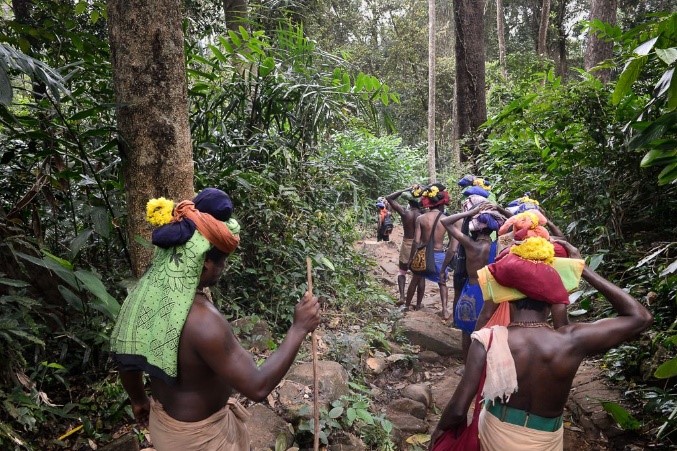
But girls below 9 years and women above 55 years are allowed, and in fact men carry little girls on their shoulders and old women in palanquins for darshan (viewing a deity), across the treacherous trek, bare-foot through the thickly forested mountain track which leads to the temple, and this should put to rest any allegation that the restriction is on account of discrimination against the female gender. This then leads to the question, why are women of a certain age-group debarred? It is strange that the stance from which these questions arise, would not similarly object to the concept of ‘stag’ and ‘doe’ parties in Western society as being against their vaunted ideals of equality, since it is recognised that men and women on occasions need to bond socially with their own sex exclusively. But the same idea of exclusive spaces is questioned when it comes to Hindu traditions. Hinduism honours every aspect of human life, of feminine and masculine essence, sanctifying every choice and the rites associated with those.
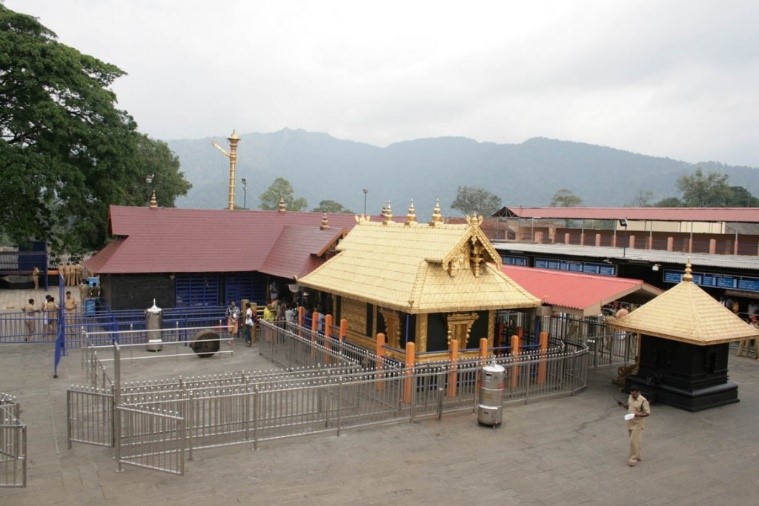
The restriction of admission to a temple is not the same as restricting access to ‘god’, which is an Abrahamic conceptual distortion of the Hindu idea of a deity, which is in fact the personified representation of an ideal that is emulated in practice. The Ayyappa temples, are dedicated to a local prince who was known as an incarnation of the Divine. The practices associated with the Ayyappa temples evolved from local lore which do not influence the overarching principles of Hinduism, but reflect in spirit part of it. Hinduism has a decentralised structure with myriad local traditions that make up its complex some of which remarkably contrast with each other. In the absence of single, authoritative point of reference, like the Church, local beliefs must be accorded primacy at a particular spot of worship.
The fascinating story of Lord Ayyappa’s birth, which is intertwined with other tales from the Puranic canon, relate the specific purpose of his incarnation as slaying of the demoness Mahishi, sister of Mahishasura, who was intent upon avenging the death of her brother by the Mother Goddess Durga. He was therefore brought into existence though the union of Shiva and Mohini (the feminine form of Vishnu). On being slayed at the hands of the divine incarnation the demoness (worshipped as ‘Malikappurathamma’ in a temple dedicated to her in the vicinity) was released from the effects of her previous actions and re-emerging as a beautiful woman, developed a deep devotion for Ayyappa and asked him to marry her. He however out of love and compassion for his devotees asked her to wait until he had served the last of his devotees who appeared as first time visitors (kanni Ayyapans) at his abode. As per Puranic timescales this implied a duration corresponding to several yugas (earth age). Therefore to express solidarity with the waiting bride, women in the marriageable age do not visit the shrine.
From the standpoint of faith there can be only two positions of regarding the legend: acknowledging its spiritual dimension, or rejecting it. Those mindful of its sanctitude assume a metaphoric interpretation of the tale in their hearts and abide in the tradition that springs from it. It is not possible to revere the deity without believing in the agamic tradition associated with Him. Whilst those on the other side of the demarcation are at liberty to ridicule and challenge the belief from their rational outlook, they cannot be allowed to impose these on the esoteric matters of the devotees. It is important to determine where exactly the infringement on liberties is made out: Those practicing their belief enshrined in the temple or those from outside who do not hold any of it in sanctity yet feel entitled to dictate in what manner its affairs must be conducted. The faith of a community is embodied in its place of worship. It is not a public facility or a recreational area where one can demand right of admission on whim. People who do not believe in a particular tradition have no business visiting the shrine.
Though there are many variations to the Swami Ayyappa legend, the Sabarimala Ayyappa temple is significant specifically of the phase of the prince’s life during which he performed austerities under a vow of strict celibacy. The deity is depicted in a yogāsana, or posture that he assumed for tapasyā, seated legs folded pressed close together with knees wide apart, feet joined at the ankles, legs bound together with a chord in a most constraining yogic position, signifying extreme austerity and asceticism. Male devotees are required to observe strict celibacy and restraint for a period of forty-one days prior to the visit to be eligible to enter the temple.
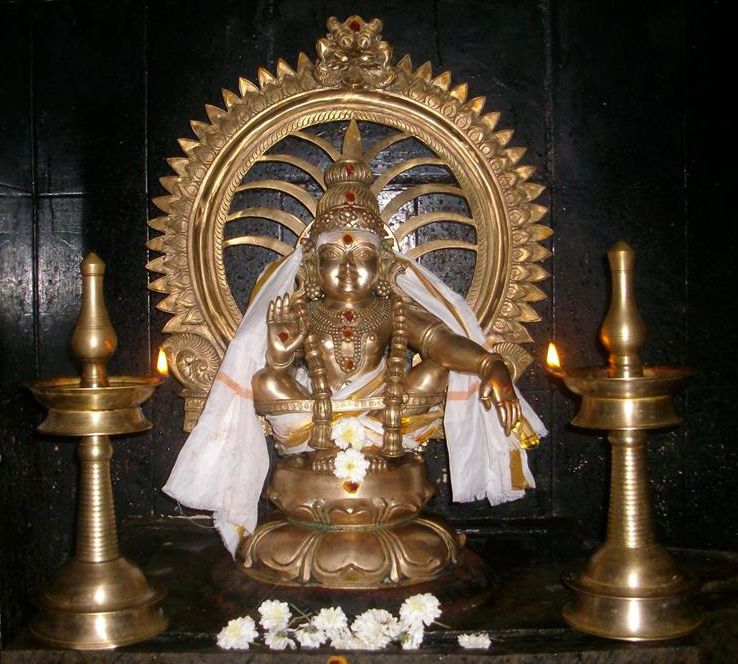
The visit itself is for them a period of observance of purity, abstinence from all sensual pleasure (which includes the sight of the opposite sex) and celibacy, which is the principle represented in the vigraha (ideal) of Sabarimala: naişthika brahmachari (perennial celibate). It is simply not an ideal consistent with any of the womanly expressions nor of sansāra (worldy aspiration). The restriction in the Aryankavu temple is much due to the same reason as Sabarimala: it marks the boy stage/early youth of Lord Ayyapan, when he was still under brahmacharya (celibacy) vow, an aspect which feminine presence would interfere with. In the other Ayyappa temples where Ayyappan is depicted as a gṛhastha (householder) there are no restrictions for women to enter.
Many of us would be aware of the brahminical rite where after poita (investiture of sacred thread) boys are kept in a small hut or secluded quarters, where they spend several days reciting the mantra they have been anointed with, sleep on the ground on a kuśa (bed of dry grass) and live on bare, strict meals. During this time no one but the father/grandfather/uncles and Mother/grandmother are allowed into the room. It marks a period of sacred seclusion and strict celibacy (brahmacharya) seen as essential for pursuit of knowledge and austerity, the chief calling that a brahmaña traditionally dedicates himself to. Even aunts, sister and female relatives are not allowed in the new brahmaña’s company. The Sabarimala temple marks the assumption of such a vow in Swami Ayyappan’s life. This is another reason why women of a certain age group, to be precise, the fertility age, are not allowed in. Quite simply, it is not the deity conducive to that aspect of worldly life.
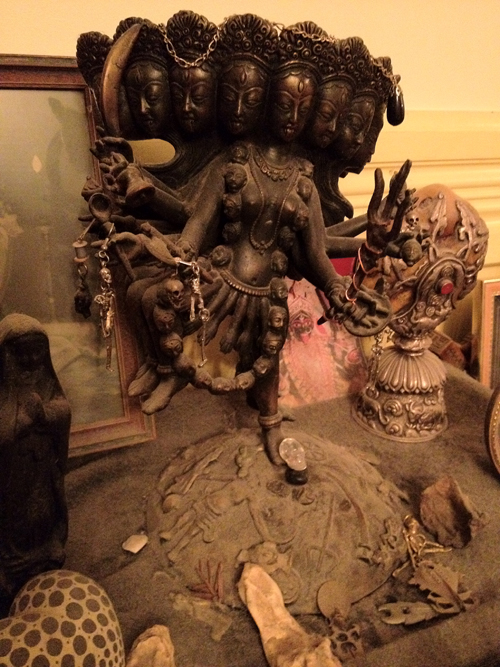
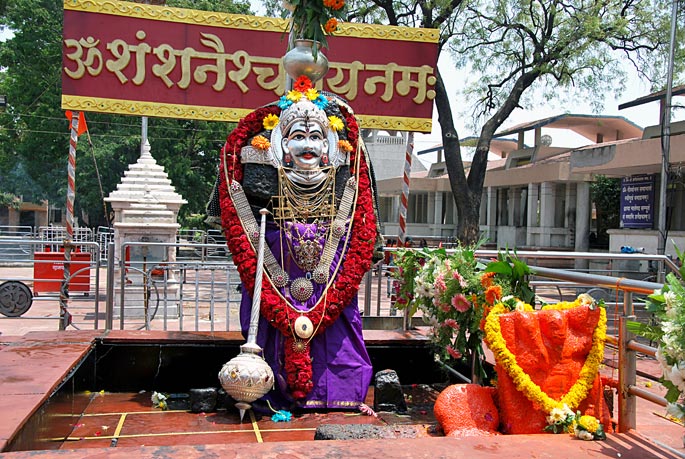
All Hindus know that one cannot get married in a Hanuman temple. It is not a deity propitious to marital life. In fact there are some Hanuman temples (e.g., the one in Ujjain Mahakal temple precincts and Warje Gaon Hanuman temple in Pune) which do not allow admission to women since Hanuman is an ideal of renunciation and celibacy. There are other Hanuman temples which do not have similar restriction, and this is the distinctive factor of Hinduism: that it does not need uniformity of practice, and its diversity is as a result of assimilation of all ideas that evolved in various parts over time. The reason for restriction could follow from a philosophical outlook. E.g. the ‘Śmashān Kali’ (Kali of the cremation ground) aspect of the Divine Mother is not worshipped by householders since it is representative of annihilation, dissolution and liberation from worldly bonds, not an aspect considered favourable for world prosperity.
Similar is the case with the restriction in the Shani Shingnapur temple (another temple which has been insistently targeted by activists for its tradition of not allowing women to worship the deity) since the planet Saturn, to which the temple is dedicated, is said to be inimical to females energetically. Why would women want to worship such an aspect which does not serve any part of their being? It is disheartening that the supposed secular State of India sees no incongruence in exerting control over Hindu places of worship, encroaching upon matters of the Hindu faith at the slightest pretext. The ad hoc takeover of the Shani Shingnapur temple by the Government of Maharashtra in response to protests by some groups who sought to forcibly worship at the temple, is a stark example of impingement on Hindus rights, coercing a community of devotees to comply to a set of ideological assumptions inconsistent with their faith.
There is a gaping chasm between polytheistic traditions and beliefs, that sanctify every part of nature as a manifestation of the Divine, and the one God principle of Abrahamic religions which exclude inconvenient aspects of creation bifurcating them into a set framework of ‘good’ and ‘evil’, ‘permissible’ and ‘impermissible’, which determine their uniform and absolute ideas about ‘right’ and ‘wrong’. These binaries colour their ideas in the secular realm as well which produce elements of disharmony, e.g. the feminine contending with masculinity, rather complementing and reinforcing each other. This paradigm of polarities and conflict is simply not applicable to a naturalist spiritual ecosystem like Hinduism which accepts every single one of the expressions and choices of conscious beings as valid in determining the overall human experience. Therefore, there are Hindu temples dedicated to a mind-boggling diversity of ideations of human life, some of which are contradictory, but none that negates the other, because each has a space and a relevance in the scheme. Of course, there is a vast area of consensus about unacceptable actions which transgress upon others’ field of expression and/or hurt them directly, but the restriction in Sabarimala temple does not even remotely fall in this scope.
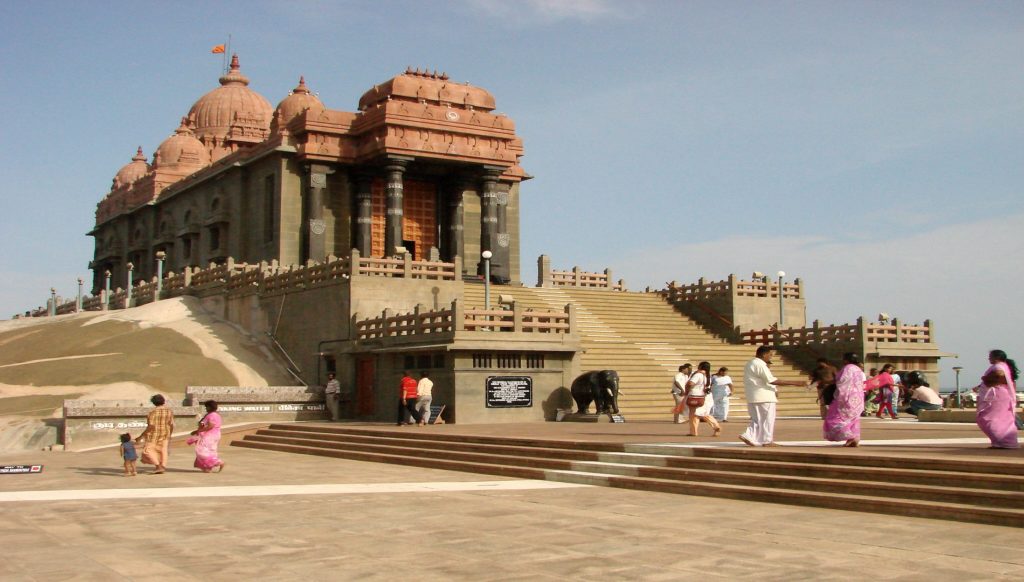
Hindu dharma allows for exclusive spaces for expression of both masculinity as well as feminity. There are temples where men are not allowed in. In the Kanya Kumari temple in Tamil Nadu the Mother Goddess is worshipped as Bhagawati Kanya Maa, which marks that portion of the legend related to the Mother Goddess, when as Kanya Parvati she is said to have performed austerities to win Lord Shiva as her husband. Being disturbed by the male element essentially interferes with her penance and purity. In this temple the Mother Goddess is worshipped as exemplifying sanyāsa (renunciation) and kanni (purity), and therefore only women are permitted to enter and perform worship. The only men who are allowed in are renunciates, though only up to the threshold of the sanctum. So, should men also now barge into the temple in the name of ‘equality’?
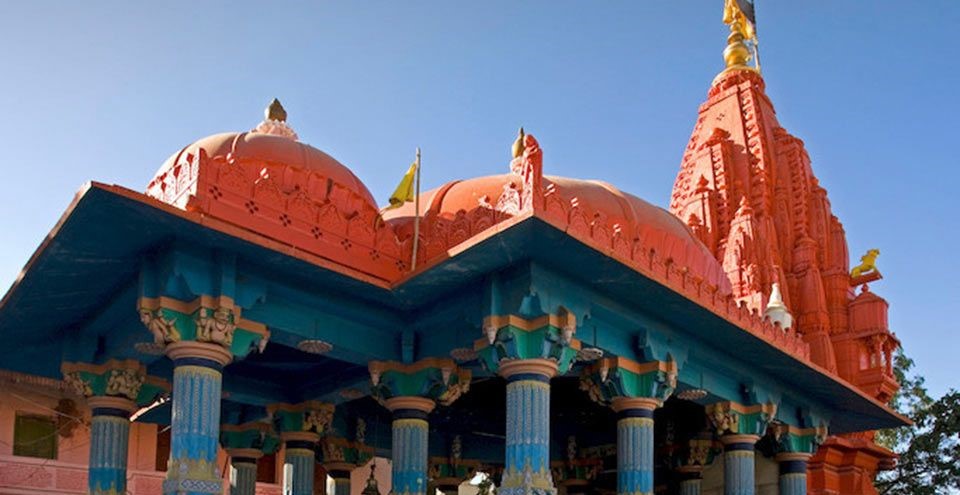
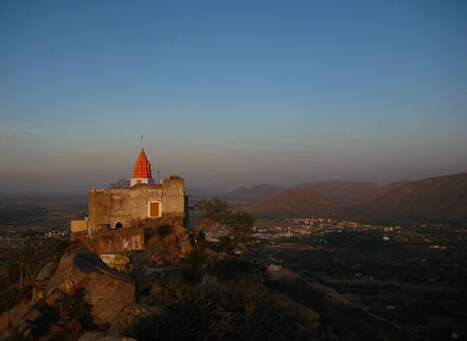
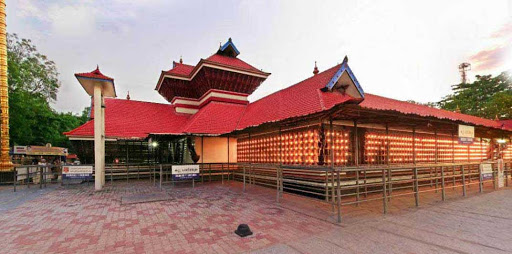
There are temples where the Mother’s menstrual cycle is venerated: e.g. the Kamakhya Shakti Pīth, Meenakshi Ammal temple, the Kamakhya temple of South, in Devipuram, Vishakhapatnam, Mata temple of Muzaffarpur, in Kharauna/Bihar and Chengannur Mahadev temple in Alappuzha/Kerala. In the specific duration that mark this phase in the month of Aṣāḍh, leave alone allow males or male priests inside, even her husband, Shiva is kept away from Her sanctum. There are other such exclusive temples associated with esoteric feminine rites where even the priests are female for part or the whole year, like the Attukal Bhagavathy Temple in Thiruvananthapuram, Chakkulathukavu Bhagavathy temple in Alappuzha. In the Brahma Temple at Pushkar, on account of a tradition following from a legend, married men are not allowed in the sanctum. The Savitri Mata Temple in Pushkar connected with the same legend, altogether debars entry to men! Similarly, the Sri Path temple in Seekaldiha (Chandauli district) Uttar Pradesh, does not allow men to enter. There is another temple in Kendrapara/Odisha dedicated to a locally revered form of the Mother Goddess, Ma Panchubarahi, where no men are allowed in. It is worshipped only by women priests from the dalit community. In Thadi village of Andhratharhi block of Madhubani district, men are banned from entering the main Durga temple and its vicinity from evening 7 to 10, on saptami, aştami and navami of Aśvina navaratras, a practice over 250 years old, for womenfolk to have a carefree environment to enjoy the festivities of Durga puja. Men oblige ensuring continuity of this centuries old tradition by making themselves scarce during those times. In Baripada, the ratha (chariot) of Jagannath is pulled only by women. Men are not allowed in Santoshi Mata temples on Fridays, a day exclusively reserved for devotions of women. In the Linga Bhairavi Temple in Coimbatore, men are not allowed to perform rituals. So should men also now start demanding the ‘right’ to be allowed inside these temples, interfere with these beautiful, exclusive feminine rites? Destroy the majesty of the tapestry of life that Hindu temples celebrate, replace it with bland, staid Abrahamic uniformism?
The appeal of Swami Ayyappa extends over all sampradayas (loosely, community of adherents of a specific philosophical path or tradition) among Vaiṣñavas, Śaivas and Śāktas. The shrine receives millions of pilgrims each year, making it one of the largest active pilgrimage sites of the world. It is perhaps for this reason that it has been an eyesore for leftist secularists, Muslims and Christian missionaries, some of whom had set it afire in 1949 and have carried out attacks on it and the pilgrims on numerous occasions before. The activism to interfere with the practices in Hindu temples is prompted by such malicious entities funded by hostile agencies which seek to eliminate Hinduism by destroying its centuries old practices. It is discouraging to note that even some of the practising Hindus fail to see through it, afflicted as they are through a prolonged propaganda that seeps in with the poison chalice of ‘education’ retained unaltered since colonial times, which shames our time-honoured customs under the guise of ‘reform’, judging them by inapplicable ideological standards. Are we fundamentally, our established practices over centuries, evolved wisdom over millennia, which reflects in the smallest to the biggest, celebratory to the mundane expressions, so ‘wrong’ that it needs such activism by motivated outsiders to ‘cure us’?
This unrelenting invasive mode to eradicate native traditions and religious beliefs, disrupting the cultural complex which holds communities and a civilisation together, is an observable trait of Abrahamic doctrinal religions and ideologies like communism, which cannot exist except to the exclusion of others. Imposing their ideological framework and worldview is part of this insidious aggression, which tries to control the way we thi nk and conduct our matters and ultimately obliterate our identity. The intense activism to push for admission of women to the Sabarimala Ayyappa Temple is carried out by such forces who have no good intention in heart.
The government and judicial authorities need to be circumspect about such nefarious designs rather than at their behest play the hob with Hinduism.
Cover Picture:
Opening of Sabarimala Ayyappa Temple for the Makaravilakku festival (Source: Deccan Chronicle)
